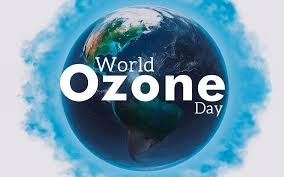World Ozone Day 2024 – A Global Call to Action
Introduction to World Ozone Day
World Ozone Day, observed annually on September 16th, is a significant occasion dedicated to raising awareness about the importance of the ozone layer in protecting the Earth’s atmosphere. The day commemorates the signing of the Montreal Protocol in 1987, an international treaty designed to phase out substances that deplete the ozone layer. In 2024, World Ozone Day focuses on the progress made in ozone layer recovery and the continued efforts required to protect this vital part of our atmosphere.
Recent Developments in Ozone Layer Protection
In 2024, World Ozone Day highlights the continued success of the Montreal Protocol and its impact on global environmental health. According to recent reports, the ozone layer is on track to recover to its pre-1980 levels by around 2066 over Antarctica, 2045 over the Arctic, and as early as 2040 in the mid-latitudes. This positive trend is attributed to the global commitment to eliminating ozone-depleting substances (ODS), such as chlorofluorocarbons (CFCs) and halons.
Global Efforts and Initiatives
This year’s observance of World Ozone Day emphasizes the need for ongoing vigilance and action. Efforts include enhancing international cooperation to address new and emerging threats to the ozone layer, such as the potential risks posed by new chemicals and industrial activities. The United Nations Environment Programme (UNEP) and other global organizations continue to spearhead initiatives to monitor and ensure compliance with the Montreal Protocol, promoting sustainable practices and technological innovations.
Achievements and Future Goals
Significant achievements in ozone layer protection include the reduction of ODS by over 99% since the protocol’s implementation. These efforts have contributed to the gradual healing of the ozone layer, which plays a crucial role in blocking harmful ultraviolet (UV) radiation from reaching the Earth’s surface. Moving forward, the focus will be on addressing challenges related to climate change and ensuring that the recovery of the ozone layer is maintained and accelerated.

Why This News is Important
Protecting Human Health
The ozone layer acts as Earth’s sunscreen by absorbing and blocking the majority of the sun’s harmful ultraviolet (UV) radiation. Without it, increased UV radiation would lead to higher rates of skin cancer, cataracts, and other health issues among humans. World Ozone Day reminds us of the direct benefits of ozone layer protection for public health and the importance of maintaining global environmental agreements.
Environmental Impact
The recovery of the ozone layer also has significant environmental implications. It helps preserve ecosystems, including marine and terrestrial life, which are sensitive to UV radiation. By continuing to reduce ozone-depleting substances, we ensure the protection of biodiversity and the stability of ecosystems that are crucial for ecological balance.
Climate Change Link
Ozone layer protection is intrinsically linked to climate change. Many of the substances regulated under the Montreal Protocol also have potent greenhouse effects. Thus, the success of the protocol not only aids in ozone recovery but also contributes to climate change mitigation. This dual benefit underscores the importance of international environmental agreements in addressing multiple global challenges.
Historical Context
The Montreal Protocol
The Montreal Protocol, signed in 1987, was a landmark international treaty aimed at phasing out substances that deplete the ozone layer. The treaty represented a groundbreaking global effort to tackle a serious environmental issue through collective action. It has since been ratified by nearly all countries, making it one of the most successful environmental agreements in history.
Past Challenges and Progress
In the years following the protocol’s implementation, significant progress has been made in reducing the production and consumption of ozone-depleting substances. Challenges such as industrial compliance, illegal trade of banned substances, and emerging chemicals have been addressed through ongoing international cooperation and scientific research.
Recent Developments
Recent scientific assessments have shown promising signs of ozone layer recovery, affirming the effectiveness of the Montreal Protocol. Continued research and monitoring are essential to address any new threats and ensure the complete restoration of the ozone layer.
Key Takeaways from World Ozone Day 2024
| Serial Number | Key Takeaway |
|---|---|
| 1 | World Ozone Day is celebrated on September 16th each year to raise awareness about ozone layer protection. |
| 2 | The Montreal Protocol, signed in 1987, has been instrumental in phasing out ozone-depleting substances. |
| 3 | The ozone layer is on track to recover to its pre-1980 levels by around 2066 over Antarctica. |
| 4 | Continued global efforts and compliance are crucial to address new threats and ensure ongoing recovery. |
| 5 | The success of the Montreal Protocol also contributes to climate change mitigation by reducing greenhouse gases. |
Important FAQs for Students from this News
1. What is World Ozone Day and why is it observed?
World Ozone Day is observed on September 16th each year to raise awareness about the importance of the ozone layer in protecting the Earth’s atmosphere. It commemorates the signing of the Montreal Protocol in 1987, which aims to phase out substances harmful to the ozone layer.
2. What was the Montreal Protocol and why was it significant?
The Montreal Protocol, signed in 1987, is an international treaty designed to phase out substances that deplete the ozone layer. It is significant because it represents one of the most successful global environmental agreements, leading to a substantial reduction in ozone-depleting substances and contributing to the recovery of the ozone layer.
3. How has the ozone layer changed since the implementation of the Montreal Protocol?
Since the implementation of the Montreal Protocol, the ozone layer has shown signs of recovery. It is expected to return to its pre-1980 levels by around 2066 over Antarctica, 2045 over the Arctic, and as early as 2040 in mid-latitudes.
4. What are some current challenges related to ozone layer protection?
Current challenges include monitoring and regulating new chemicals that could potentially harm the ozone layer, ensuring compliance with the Montreal Protocol, and addressing the impacts of climate change that could affect ozone layer recovery.
5. How does ozone layer protection relate to climate change?
Ozone layer protection is related to climate change because many substances regulated under the Montreal Protocol are also greenhouse gases. By reducing these substances, the protocol helps mitigate climate change, demonstrating the interconnectedness of environmental issues.
Some Important Current Affairs Links


















